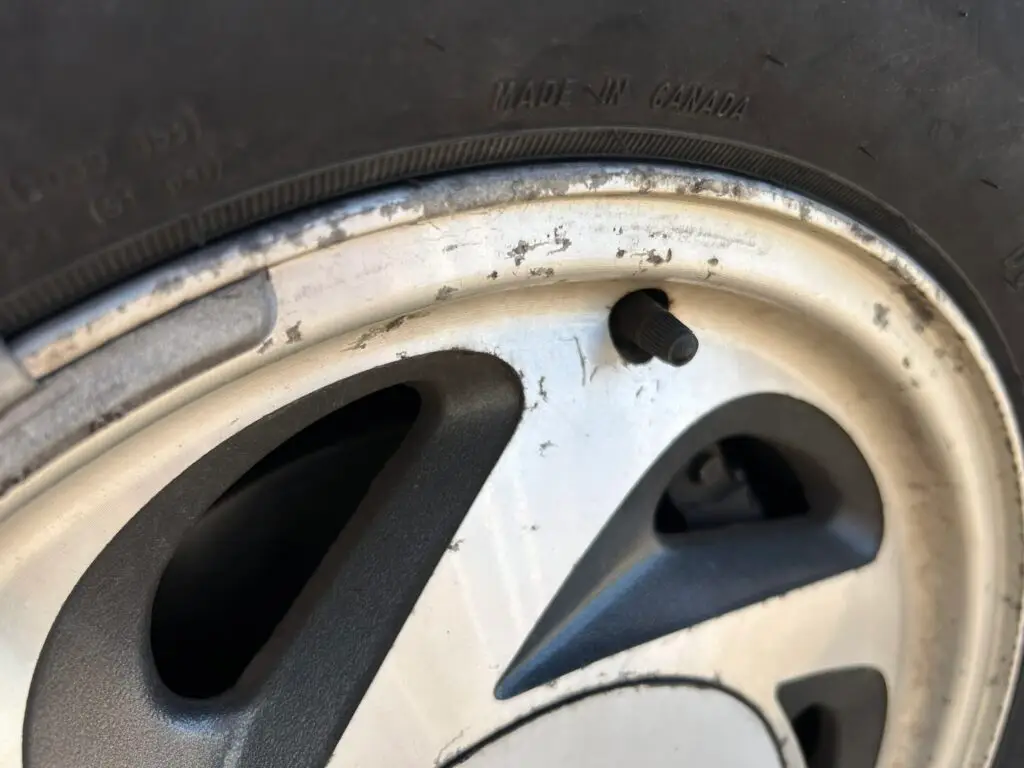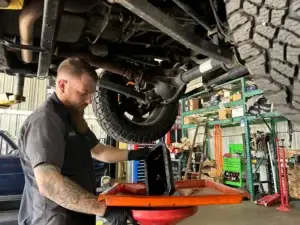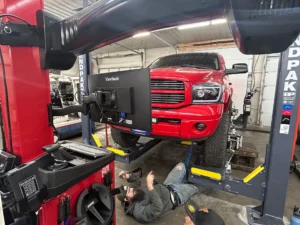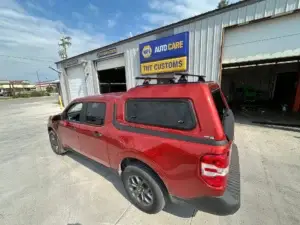What Your Tire Pressure Sensor Means
Maintaining proper tire pressure isn’t just about keeping your tires from going flat — it’s critical for your safety, fuel efficiency, tire longevity, and overall vehicle performance. At TNT Customs, we often see drivers come in with questions about their tire pressure and tire pressure monitoring system (TPMS) alerts. This guide will help you understand why tire pressure matters, how it’s affected by weather, and what to do when that dashboard light pops on.

Why Tire Pressure Matters
Your tires are the only part of your vehicle that touches the road. Proper inflation helps ensure:
✅ Better handling and braking
✅ Improved fuel economy
✅ Even tire wear and longer tire life
✅ Reduced risk of blowouts or flats
Ignoring tire pressure can lead to poor performance, costly repairs, and safety hazards.
FAQs About Tire Pressure
Q1: What is the recommended tire pressure for my vehicle?
A: You can usually find this information on a sticker inside the driver’s door, in your owner’s manual, or sometimes on the fuel door. It’s important to follow the manufacturer’s recommendation — not the number on the tire sidewall, which is the maximum pressure the tire can handle, not the recommended pressure for your car.
Q2: How often should I check my tire pressure?
A: Check at least once a month and before long trips. Tires can lose 1-2 psi (pounds per square inch) per month, even without a leak.
Q3: What happens if my tire pressure is too low?
A: Low pressure causes more tire surface to contact the road, increasing rolling resistance. This leads to reduced fuel efficiency, premature wear, overheating, and a higher risk of blowouts.
Q4: How does cold weather affect tire pressure?
A: For every 10°F drop in temperature, your tires can lose about 1-2 psi. That’s why you often see the TPMS light come on in fall and winter — it’s not always a leak, just physics! As temperatures warm up, pressure naturally rises again.
Q5: How does tire pressure change with temperature fluctuations?
A: As the air inside your tires heats up, it expands, increasing the pressure. That’s why you may notice slightly higher readings after driving for a while or during summer months. Always check and adjust tire pressure when tires are “cold” — before driving or after the car has been sitting for a few hours.
Understanding Your Tire Pressure Sensor (TPMS) Alert
Modern vehicles come with a tire pressure monitoring system (TPMS) that tracks tire pressure and alerts you when it falls below a safe level.
-
Low Tire Pressure Warning Light: This typically means one or more tires are below the recommended psi. Check all tires (including the spare!) and inflate as needed.
-
TPMS Blinking Light: A flashing TPMS light often indicates a malfunction in the system itself, not just low pressure. It’s best to have it checked by a technician.
Ignoring these warnings can lead to unsafe driving conditions, so it’s important to address them promptly.
Tips for Managing Tire Pressure in Cold Weather
✔ Check your tire pressure regularly during cold months.
✔ Inflate tires to the recommended cold psi — don’t overinflate just because it’s winter.
✔ Keep a reliable tire pressure gauge in your glove box.
✔ If the TPMS light comes on after a cold snap, check and adjust before assuming there’s a leak.

At TNT Customs, we’re passionate about keeping you and your vehicle safe on and off the road. By staying on top of tire pressure, you’ll enjoy better performance, save money on gas, and extend the life of your tires.
If you’re unsure about your tire pressure or your TPMS alert, stop by TNT Customs. We’re happy to check your tires, help you inflate them properly, or diagnose any sensor issues.




